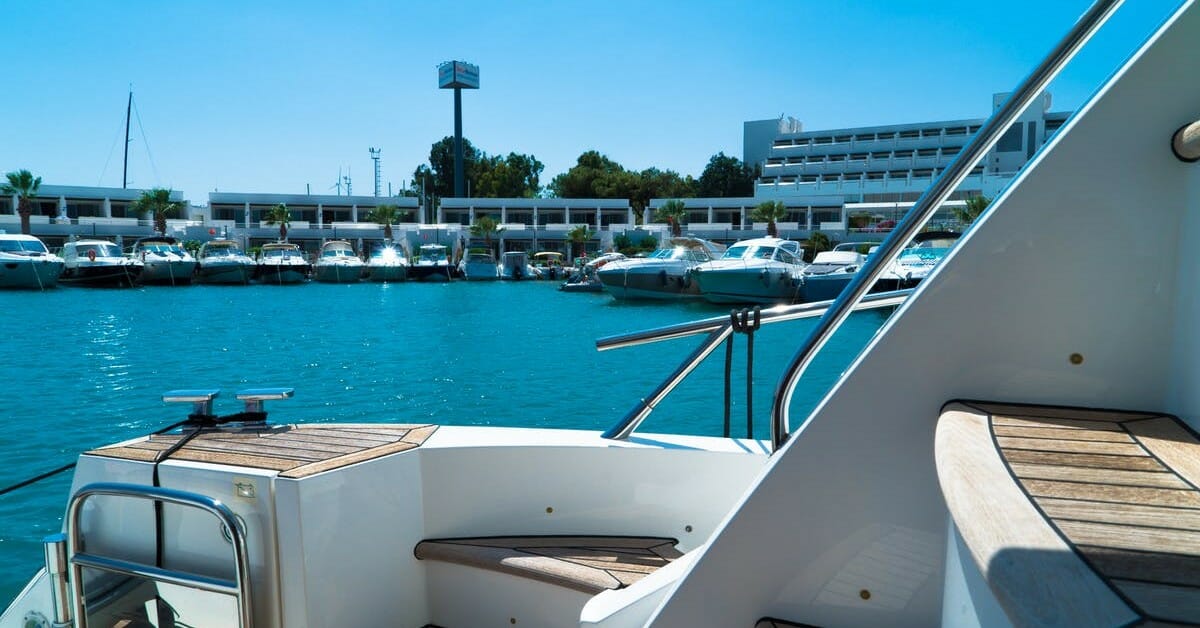For the last decade, the term ceramic coating has popped up across the automotive and marine industry. Exploring its importance is the easy part. However, explaining how it works can prove to be a challenging task. To help you further understand how ceramic coating works, our team at Off The Deep End compiled a yacht ceramic coating rundown to help.
What is Ceramic Coating?
Ceramic coating was popularized by the automotive industry. Its purpose was to protect a vehicle’s paint job while also giving it a clean, smooth, look. Marine engineers were looking for new ways to improve the exterior of yachts and boats to minimize cost, protect the exterior from damage, and simplify the cleaning process. They accomplished this task by creating a ceramic coating specific to yachts and boats.
The Pros of Ceramic Coating
For management companies, charter houses, and private yacht owners—ceramic coating offers many benefits. First, it leaves a lasting impression on potential buyers and clients. This is thanks to the high-gloss coating that gives the yacht a fresh, crisp, and well-manicured look.
Yachts face harsh conditions before, during, and after a charter. From oxidation to soot staining from the engine, the exterior of a yacht can rapidly deteriorate. The yacht ceramic coating hardens against the exterior surface and is durable. This keeps the yacht glowing and allows its crew to avoid expensive refurbishing bills.
Lastly, the coating saves yacht caregivers precious time from exterior cleaning and maintenance. This is good news for charting companies and management firms looking to cut down cleaning costs, overtime, and excess spending.
The Cons of Ceramic Coating
The cons list is relative and depend on each individual experience. However, there are concerns about the ceramic coating process, here’s a look at three common complaints.
- The DIY Debacle
Ceramic coating for yachts can be expensive, especially if it’s a commercial mega-yacht. The issues isn’t that captains, private owners, and charter companies don’t believe in ceramic coating; they prefer to do it themselves to save. Although there are DIY kits out there, if it isn’t done correctly, the coating will not hold. A major part of the process is making sure that the surface is 100% free of dirt and debris. If it’s caked on the surface, it will take a lot more manpower and elbow grease to get it ceramic coat ready.
- Untreated Paint Corrosion
An important part of the process is to do a thorough inspection of the yacht first and fix any corrosion or chipped paint. However, if you ignore this step, if the paint begins to chip away, so does your coating. Having a professional team in place helps to prevent this from happening as most will do a thorough inspection of the yacht before beginning the application.
- Chemicals
Ceramic coating allows charters to use a mild soap and water for cleaning the exterior which minimizes ocean pollution. However, the application itself contributes to air pollution responsible for global warming. Marine engineers continue to work on finding innovative ways to reduce the industry’s carbon footprint, until then, environmentalists aren’t too happy with this process.
Is Ceramic Coating a Fad?
Absolutely not. There are a few Marine engineers and yacht enthusiasts who think ceramic coating is simply a trend that will disappear. However, they are few and far between. Ceramic coating for yachts have become popular amongst charter companies and private yacht owners because the initial investment pays for itself through savings.
Off the Deep End continues to work with the industry to improve alternative refurbishing methods. Our team of specialists has spent the last 14 years helping charter companies improve their fleets with our ceramic coating services. For more information or to schedule a consultation, contact us today.





